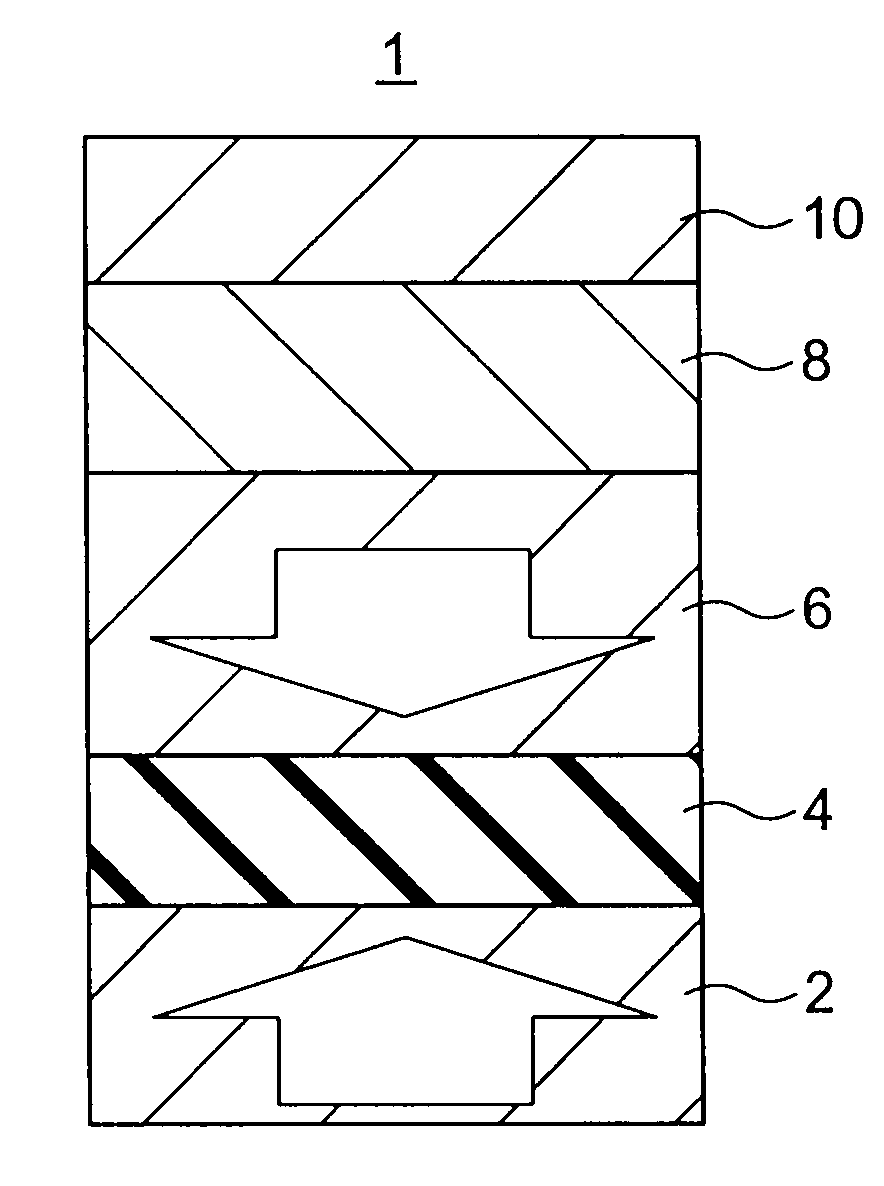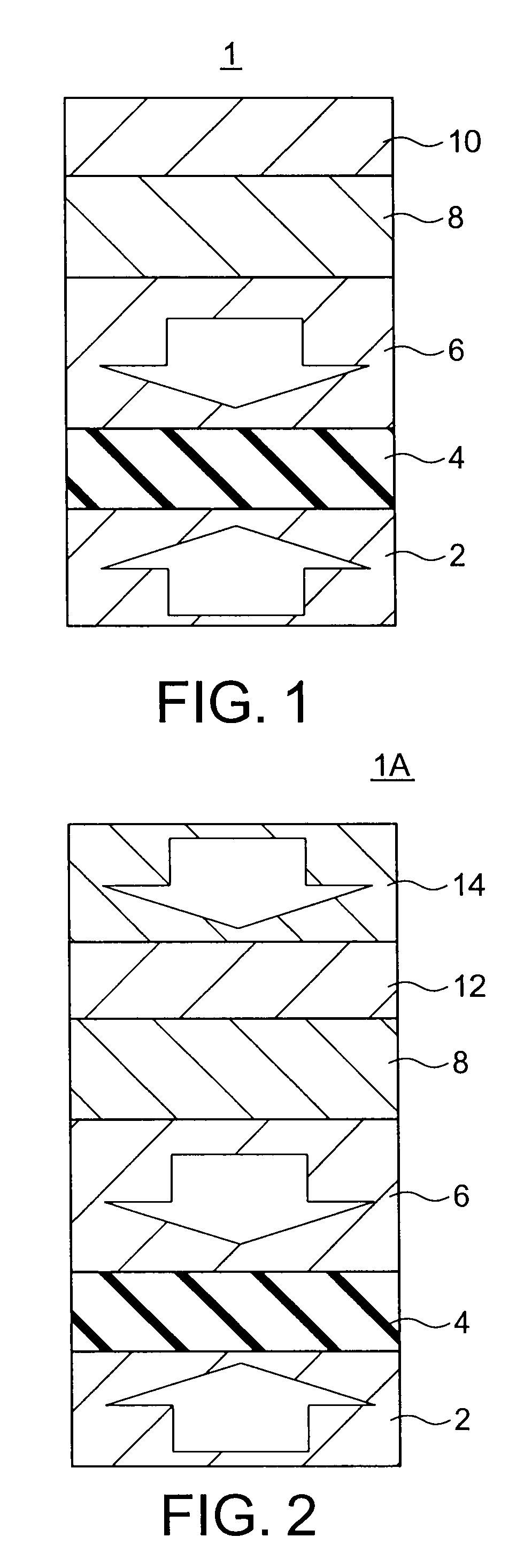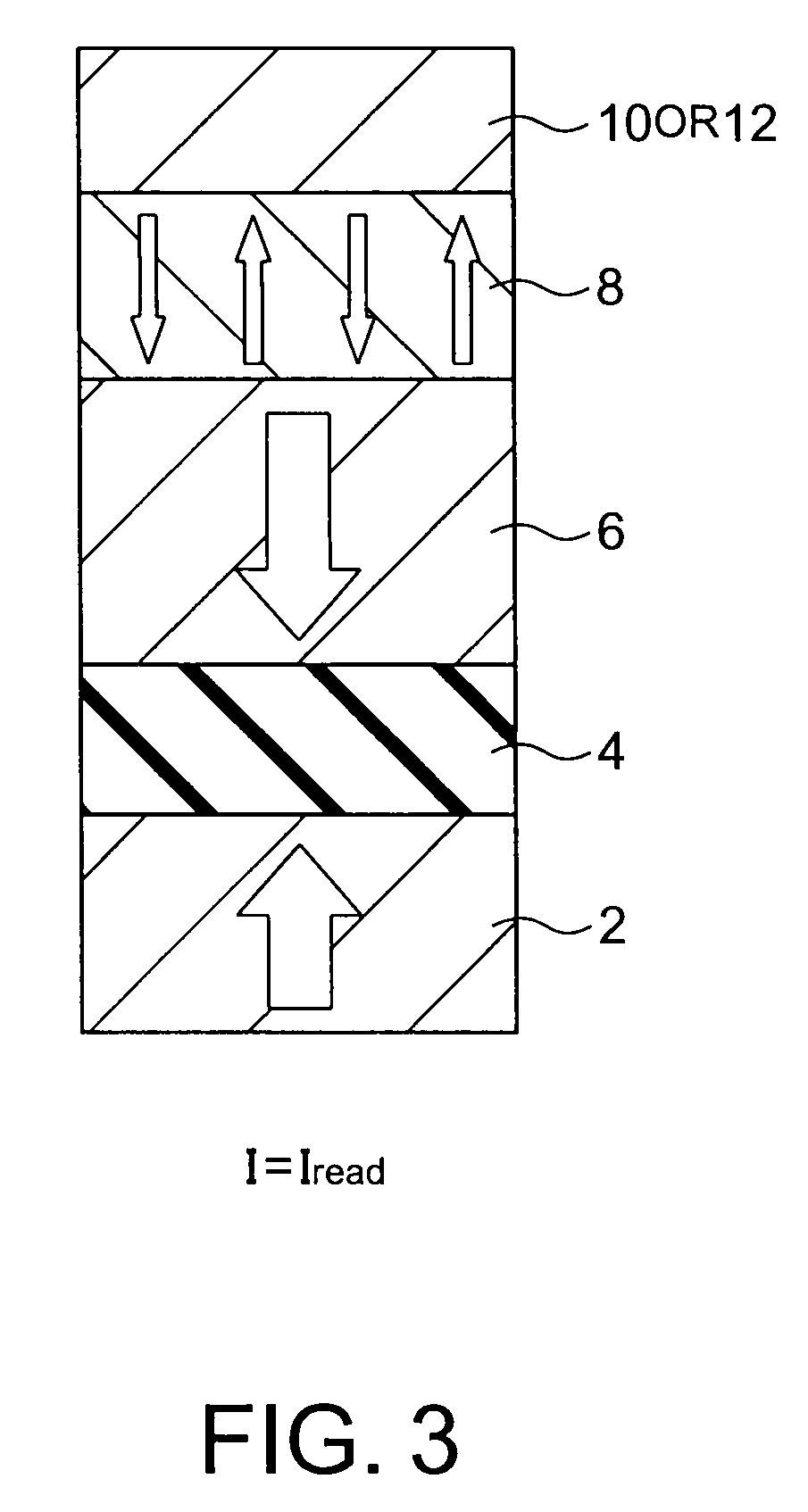Magnetoresistive element and magnetoresistive random access memory including the same
- Summary
- Abstract
- Description
- Claims
- Application Information
AI Technical Summary
Benefits of technology
Problems solved by technology
Method used
Image
Examples
first embodiment
[0024]FIG. 1 shows a magnetoresistive element (MR element) in accordance with a first embodiment of the present invention. FIG. 1 illustrates the stacked structure as the principal body of the MR element of this embodiment. In FIG. 1, the arrows indicate magnetization directions.
[0025]The MR element is designed to be in one of two steady states in accordance with the direction of the bidirectional current flowing in a direction perpendicular to the film plane. The two steady states are associated with “0” date and “1” data, respectively, so that the MR element can store binary data. This is called the spin-transfer-torque writing method, by which the magnetization is varied with the direction of the current flowing direction and information corresponding to the magnetization state is stored.
[0026]The MR element 1 of this embodiment includes: a magnetization reference layer (hereinafter also referred to as a reference layer) 2 that is made of a ferromagnetic material or a ferrimagnet...
second embodiment
[0027]FIG. 2 shows a magnetoresistive element (MR element) in accordance with a second embodiment of the present invention. FIG. 2 illustrates the stacked structure as the principal body of the MR element of this embodiment. In FIG. 2, the arrows indicate magnetization directions.
[0028]The MR element 1A of the second embodiment includes: a magnetization reference layer 2 that is made of a ferromagnetic material or a ferrimagnetic material, has perpendicular magnetization, and has a magnetization of which a direction is invariable in one direction; a magnetization free layer 6 that is made of a ferromagnetic material or a ferrimagnetic material, has perpendicular magnetization, and has a magnetization of which a direction is variable; an intermediate layer 4 that is provided between the magnetization reference layer 2 and the magnetization free layer 6; a magnetic phase transition layer 8 that is formed in contact with the face of the magnetization free layer 6 on the opposite side f...
example 1
[0101]First, a specific example of a MR element of the first embodiment is described.
[0102]The MR element includes a stacked structure having a cap layer / an excitation layer 10 formed with MgO (0.7 nm) / a magnetic phase transition layer 8 formed with Fe50Rh50 (10 nm) / a magnetization free layer 6 formed with Fe50Pt50 (2 nm) and Fe (0.5 nm) / an intermediate layer (barrier layer) 4 made of MgO (1 nm) / a magnetization reference layer 2 formed with Co40Fe40B20 (2 nm) and Fe50Pt50 (10 nm) / a base layer.
[0103]The numeric values in the brackets indicate the layer thicknesses of the respective layers. Also, the magnetization reference layer 2 formed with Co40Fe40B20 (2 nm) and Fe50Pt50 (10 nm) has a magnetization of which a direction is invariable in one direction. The Co40Fe40B20 (2 nm) layer is an interfacial magnetic layer, and is inserted so as to increase the MR ratio. The Fe50Pt50 (10 nm) layer may have a magnetization of which a direction is invariable in one direction due to exchange cou...
PUM
 Login to View More
Login to View More Abstract
Description
Claims
Application Information
 Login to View More
Login to View More - R&D
- Intellectual Property
- Life Sciences
- Materials
- Tech Scout
- Unparalleled Data Quality
- Higher Quality Content
- 60% Fewer Hallucinations
Browse by: Latest US Patents, China's latest patents, Technical Efficacy Thesaurus, Application Domain, Technology Topic, Popular Technical Reports.
© 2025 PatSnap. All rights reserved.Legal|Privacy policy|Modern Slavery Act Transparency Statement|Sitemap|About US| Contact US: help@patsnap.com



